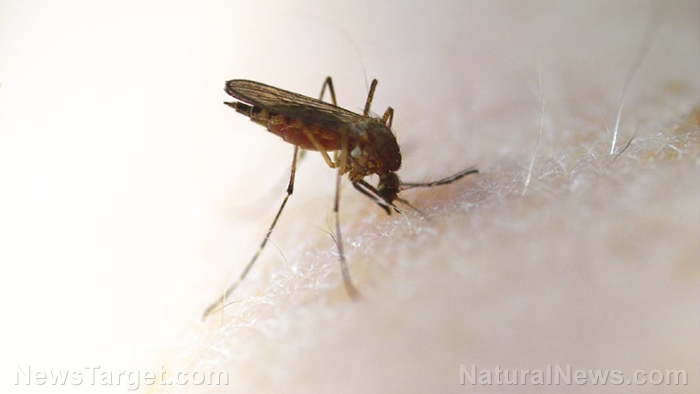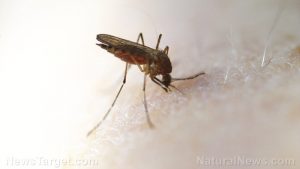Pyrethrins and Pyrethrum – toxicity, side effects, diseases and environmental impacts
11/30/2017 / By Rhonda Johansson

There are six esters that comprise the organic pesticides known either as pyrethrum or pyrethrin. The difference between the names lies in where the pesticide was derived from; with the former coming from several perennial African plants from the genus tanacetum and the latter derived from the pyrethrum plant. Most toxicologists refer to these pesticides collectively as pyrethrins, as most of the products seen in grocery stores are produced from the Chrysanthemum plant. We will be using the same allocation in this introduction; although the reader is encouraged to do their own research to truly understand the difference between the two.
Regardless of what they are called, this class of pesticides are primarily used to control fly, mosquito, moth and ant populations. Pyrethrins work by exciting the nervous system of the insects that touch or eat it. The instability caused quickly leads to paralysis and eventual death. Sometimes, pyrethrins are mixed with other chemicals to increase their viability.
Because pyrethrins are relatively easy to extract and manufacture, these pesticides have been in market since the early 1950s. Today, health regulatory groups are attempting to phase out the product due to the many adverse effects seen on humans.
List of known side effects
Acute symptoms of pyrethrin poisoning include painful rashes (if applied to the skin) or constricted breathing (if inhaled). Prolonged exposure to the substance can numb the lips and tongue. Patients have also reported experiencing nausea, dizziness, restlessness, tinnitus, incoordination, convulsions, and stupor.
Solvents that contain pyrethrins can induce pulmonary edema.
One longitudinal study observed human workers who were constantly exposed to the pesticide. The authors of the study saw that these people had a 30 percent increased risk of erythema (redness of the skin), skin roughening, and pruritus (severe itching of the skin). These symptoms were immediately controlled once the worker was no longer exposed to the pyrethrin.
Pyrethrin can worsen asthma conditions and various types of allergies. Several case studies found the pesticide to cause “dermal anaphylaxis” which is characterized by dermatitis and the sudden severe swelling of the face and lips.
There is suggestive evidence that pyrethrin is a carcinogen although there is not enough evidence to truly reach this conclusion.
Body systems affected by pyrethrins and pyrethrum
Pyrethrins generally target the skin, causing severe allergic reactions. Nevertheless, the pesticide can affect the respiratory system as well.
Animal studies conclude the negative effects pyrethrins have on the reproductive system. These studies observed that mothers who were exposed to the chemical had a higher risk of delivering a baby with a low birth weight.
Items that can contain pyrethrins and pyrethrum
There are more than 2,000 registered pesticides that contain pyrethrins. Most of these are your “typical” pesticides that are used in the home. The U.S. Food and Drug Administration (FDA) has allowed the use of certain pyrethrins to be used in organic agriculture and in some head lice products.
How to avoid pyrethrins
If you are applying a pyrethrin pesticide in your home, remember to leave the treated area for at least 15-20 minutes before reentering. It is also a good idea to carefully follow the label instruction in all products that contain pyrethrins.
Where to learn more
- Bug spray chemical can build up in your home and cause dizziness and brain function problems, scientists find
- Most head lice now resistant to common insecticides, new study finds
- Essential oils are the perfect non-toxic bug repellant
- Give Thought to Green when Buying a Tree
- Crop-devastating ‘whitefly’ found in US for first time, could devastate national food supply
Summary
Pyrethrins and pyrethrum both refer to a class of organic pesticides composed of six types of esters that are toxic to various insects. Their ease of production has influenced its general popularity despite recent research concluding the substance’s adverse effects to human health.
Sources include:
Tagged Under: Pyrethrins and Pyrethrum




















